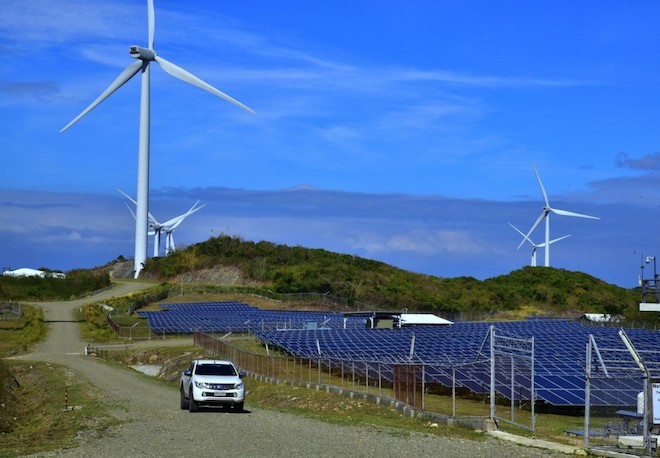
Energy demand in Southeast Asia is projected to triple by 2050 in the absence of new policies to accelerate clean energy transition, according to a new report of the ASEAN Centre for Energy (ACE). Total final energy consumption is expected to reach 1,282 million tonnes of oil equivalent in 2050 from 385 Mtoe in 2020. The region could become a net importer of gas by 2025 and net importer of coal by 2039 if it continues to rely on fossil fuels.
The energy think tank says a secure and resilient transition is key to strengthen national and regional energy security, especially amid various shocks, such as the COVID-19 pandemic and geopolitical tensions that have affected fuel markets.
The 7th edition of the ASEAN Energy Outlook (AEO7) was launched at the 40th ASEAN Ministers on Energy Meeting, which was hosted by Cambodia virtually on 15 September to discuss challenges faced by the region and efforts to advance energy cooperation.
In their joint statement, the ministers said: “The AEO7 will enable ASEAN to explore multiple future scenarios for the region’s energy demand taking into consideration all fuels and technologies, as well as to monitor access and social impact, and, delve into options for strengthening ASEAN’s energy resiliency and security through clean energy technologies for grid integration, the decarbonization of fossil fuels, renewable energy, and industrial efficiency.”
Four scenarios and pathways
The report outlines four scenarios and potential pathways for achieving the region’s long-term energy security and energy transition agenda. It assesses measures for energy resilience, which include exploring technologies for grid integration, utilizing fossil fuels during the transition, improving industrial efficiency, enhancing dispatchability of renewable energy, financing energy transition, and managing the safety and social acceptance of nuclear power.
The four pathways are based on the baseline scenario, national targets scenario, regional targets scenario, and least-cost optimization scenario. The baseline scenario assumes growth in energy demand will follow historical trends. The national targets scenario uses energy policies and targets of the 10 ASEAN member states. The regional targets scenario is based on the ASEAN Plan of Action for Energy Cooperation (APAEC).
This year’s energy outlook introduces a technology-neutral optimization scenario that “considers cost-effectiveness, affordability, and maturity of technology to fulfil the growing electricity demand.” This least-cost optimization scenario shows a cost-effective alternate future post-2025, where the electricity generation system could cost $174.7 billion less than the regional target scenario from 2021 to 2050. It includes the deployment of the ASEAN Power Grid and battery and energy storage systems.
In his foreword, ACE Executive Director Nuki Agya Utama notes that the share of renewable energy in the total primary energy supply will be smaller in the least-cost optimization scenario than the regional targets scenario in 2050. “Interestingly, it results in a system that is more energy efficient—the energy intensity reduction is projected to be 3.3% higher than the APS [regional targets scenario] in 2050.”
Cutting energy intensity and emissions
The report says the modelling of policies to meet national and regional targets shows that the region can buck many of the adverse trends mentioned in the study.
ASEAN member states need policies to promote energy efficiency, especially in the transport and industry sectors, to meet the regional target of 32% reduction in energy intensity by 2025. In the national targets scenario, renewables in the total energy supply will be short by 5.5% and energy intensity reduction by 2.8%. However, in terms of renewables’ share in installed capacity, the countries are projected to exceed the regional target of 35% by 2.9% in 2025.
Substantial improvements in energy efficiency and fuel shifting can reduce energy demand. Compared with the baseline scenario for 2050, the report says “savings will reach 25.3% for national policies and 34.3% once additional regionally focused measures are included.” The report suggests “promoting energy efficiency in electric technologies in the residential and commercial sectors (e.g., efficient lighting, cooling, and appliances), improvement of industrial processes, fuel economy improvement and electric vehicle (EV) deployment in the transportation sector.”
Modelled policy measures are also seen to control the energy sector’s carbon emissions. Implementing national measures would keep emissions at 4,030 megatonnes (million tonnes) of carbon dioxide equivalent (CO2-eq) in 2050 (about 5.1 tCO2-eq/capita), while additional regional measures would result in a decline to 2,966 Mt CO2- eq (about 3.8 tCO2-eq/capita). Strong renewable deployment in the region will also create up to 5.5 million jobs by 2050.
For the first time, ASEAN takes full leadership in data gathering, modelling, writing, and dissemination for the energy outlook. It was developed by ACE in collaboration with national experts from ASEAN member states and guided by the ASEAN Regional Energy Policy and Planning Sub-sector Network. Support was provided by the Deutsche Gesellschaft für Internationale Zusammenarbeit (GIZ) GmbH through the ASEAN–German Energy Programme (AGEP); Ministry of Economy, Trade and Industry (METI) of Japan; and ASEAN Climate Change and Energy Project (ACCEPT).
This article was first published by BIMP-EAGA on 12 October 2022.

